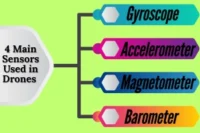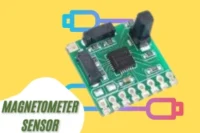How GPS Drones Help You Avoid Flyaways and Crashes
Published: 18 Jul 2025
Did you know some drones can just fly away and never come back? It happens more often than you would think, especially with non-GPS drones. These drones don’t have tracking, so if they drift too far, you might lose them for good. That means you could lose your entire drone in seconds. On the other hand, a GPS drone can auto-return, lock onto satellites, and stay within a set flying zone. If you want to avoid the stress of losing your drone, this guide is for you. Let’s look at why GPS drones are a safer choice.
Why Do Non-GPS Drones Get Lost So Easily
Non-GPS drones often get lost because they don’t have built-in location tracking. That means the drone doesn’t know where it is during flight. If it flies too far or out of sight, there’s no way for it to return on its own. Another big problem is wind. A light breeze can easily push a non-GPS drone off course. And if the signal between your remote and the drone gets weak or lost, you won’t be able to control it anymore. Without GPS, the drone can’t correct its path—and it may just keep drifting until it’s gone.
What Features Are Missing in Non-GPS Drones
Non-GPS drones are simple, but they miss out on important features that help keep your drone safe and easy to fly. These missing tools can make flying harder, especially for beginners. Here’s what they don’t have:
No Auto Return : GPS drones have a return-to-home button. Non-GPS drones don’t. If you fly too far or lose sight of the drone, you must bring it back manually. That takes skill, and if you’re a beginner, it’s easy to panic or lose control.
No Satellite Lock : Without GPS, these drones can’t lock onto a location in the sky. That means they don’t hover steadily in one place. They tend to drift, even if you’re not touching the controls, making stable flying a challenge.
No Geo-Fencing : GPS drones can stay within safe flight zones using geo-fencing. But non-GPS drones don’t have this. There’s nothing stopping them from flying into restricted areas or too far from you.
How Does a GPS Drone Stop You from Losing It
A GPS drone uses smart features that help keep it safe and easy to control. One of the most important is location awareness. Because it connects to satellites, the drone always knows exactly where it is during flight. This means it won’t get lost, even if it flies far. Another helpful feature is automatic return-to-home. If the battery runs low or the signal is lost, the drone can fly back to the spot where it started, just by pressing one button. GPS drones also offer stable hovering, which means they stay still in the air without drifting. Even if you stop touching the controls, the drone remains in place. All these features work together to reduce stress and prevent flyaways.
Can a GPS Drone Find Its Way Back on Its Own
Yes, most GPS drones can return on their own, even if you lose control. This is one of the biggest reasons why GPS drones are safer for beginners. Here’s how they manage to do it:
Return-to-Home (RTH) Feature : Most GPS drones have a built-in RTH button on the remote or app. If you press it, the drone uses its GPS signal to fly back to the exact place it took off from. This gives you peace of mind, especially when flying far or high.
What Happens When Signal Is Lost : If the drone loses connection with the remote or your phone, it doesn’t panic or crash. Instead, the GPS system kicks in. The drone will automatically fly back to its home point, no action needed from you.
Real-Life Example : Imagine this: A beginner is flying their GPS drone in a big field. Suddenly, the screen freezes and the remote stops responding. Instead of flying off or falling, the drone turns around and returns to its takeoff spot—safe and sound. That’s the power of GPS.
GPS Drones Stay Inside a Flying Zone
GPS drones have smart safety features that help them stay within safe areas. These features are great for beginners who want to avoid flying too far or into restricted spaces.
Geo-Fencing : GPS drones can be programmed to fly only within a certain boundary, called a geo-fence. This invisible fence keeps your drone from going beyond a set range. It’s very helpful for avoiding restricted airspaces, busy streets, or private property. If the drone reaches the edge of the zone, it will either stop or return automatically.
App or Controller Settings : Most GPS drones come with easy-to-use apps or controller settings that let you create a safe flying area. Before takeoff, you can set how far and how high the drone is allowed to go. This is perfect for beginners who want extra control without needing technical skills.
Final Thoughts
When comparing GPS drones vs non-GPS drones, the differences are clear. GPS drones offer smart features like return-to-home, satellite tracking, and geo-fencing that make flying safer and easier—especially for beginners. Non-GPS drones may cost less, but they lack the tools that help you stay in control. If you want peace of mind, fewer risks, and a better flying experience, a GPS drone is the smarter choice. It’s the best way to enjoy stress-free flying from your very first takeoff.





